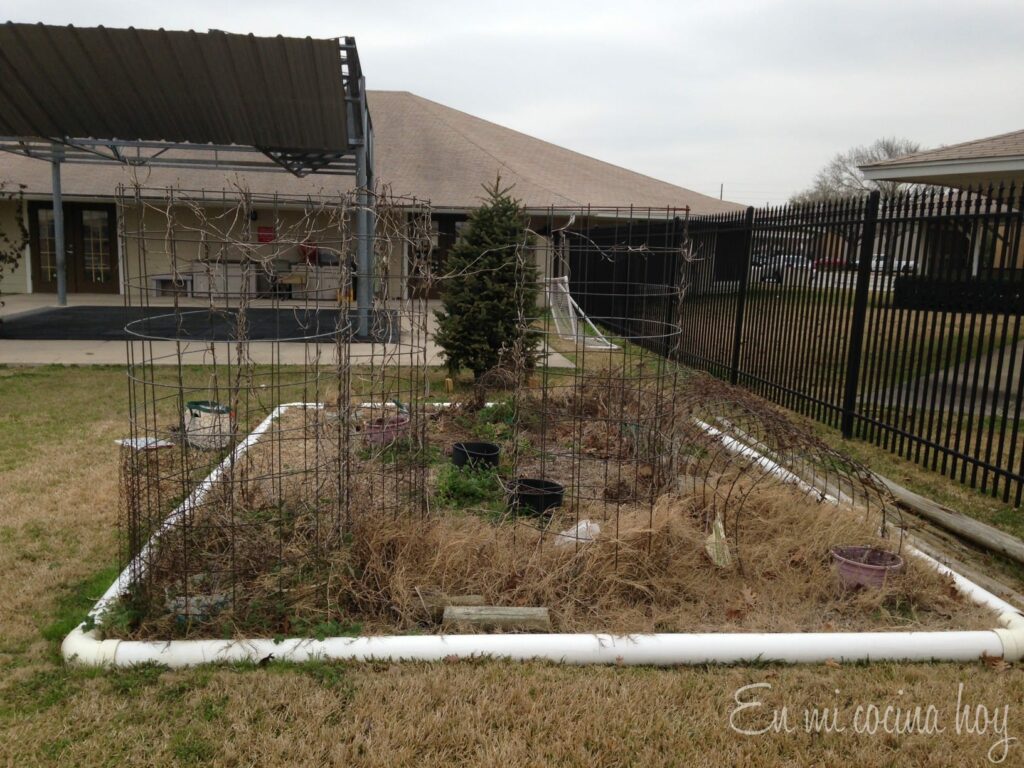 Learn the 6 Basics of the Vegetable Garden in Houston. In 2014, I adopted a new school garden and had been thinking about how to re-design it and make the most of it. I will serve a kindergarten class, so it must be effortless to access for short arms 🙂
Learn the 6 Basics of the Vegetable Garden in Houston. In 2014, I adopted a new school garden and had been thinking about how to re-design it and make the most of it. I will serve a kindergarten class, so it must be effortless to access for short arms 🙂
As always, when designing a new location, you should consider the Basics of the Vegetable Garden in Houston:
- Location: always choose the sunniest spot in your yard; everything else is secondary.
- Preparation of the soil: if you have the time: cover the ground with black bags for 2-3 weeks (secure with rocks or planks of wood) to "cook the soil" and kill weeds. If not, weeding by hand is needed.
- Installing raised beds: Although you can grow directly in the ground in many places, this is not the case in Houston. I recommend raised beds since it creates a barrier to prevent weed growth and the soil from getting compacted so the roots can quickly grow. Also, they protect your crop from minor flooding events.
- Soil: The essential thing (only secondary to sun exposure) is soil quality. It will determine the quality of the vegetables you grow. Buy organic soil if possible and specifically develop to grow vegetables (mix of compost and sand).
- Irrigation: your water source should be close to the garden so that during the summer, when it is sometimes necessary to water two times a day, this is no problem. Soaker hoses are the best method to provide even watering during our hot summers.
- Records: Always keep records of where you grow the plants in each bed to establish a proper crop rotation. I do not think you are going to remember next year. A simple diagram will save you time and disease to your plants.
Visit our collection of articles on how to grow vegetables in Houston or Sustainable weed control measures.
The transition from an abandoned garden to a productive vegetable garden is magnificent. This garden is located in the Medical Center Area in Houston.
It is a small vegetable garden with four raised beds for pre-K and kindergarten children. When planning a garden for this age group, 4-5 years, it is essential to focus on deep raised beds; higher is more accessible for children to work on them. And the beds cannot be too broad, as his short arms should be able to reach the middle of the bed to cultivate and plant.
This garden had been abandoned for a couple of years, and they used to grow in plastic buckets. I do not recommend this because you do not have enough soil and nutrients for large plants like tomatoes. And small buckets dry out almost immediately, requiring permanent irrigation for the plants do not get stressed.
The first thing I did was weeding and pull out all the grass and weeds. Then, we set up the raised beds, which are plastic on Amazon. We cover the bottom of each bed with five layers of newspaper. We filled them with the best quality soil we could buy. Position the plants and cover them with mulch around them. Now is ready to be enjoyed with the kids for years to come.
If you have questions, leave me a comment.










Leave a Reply